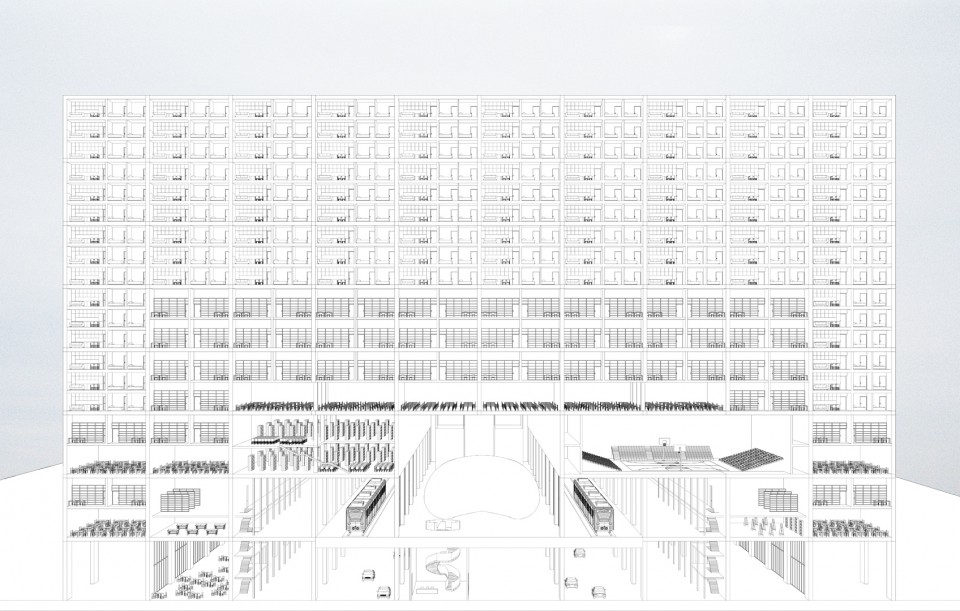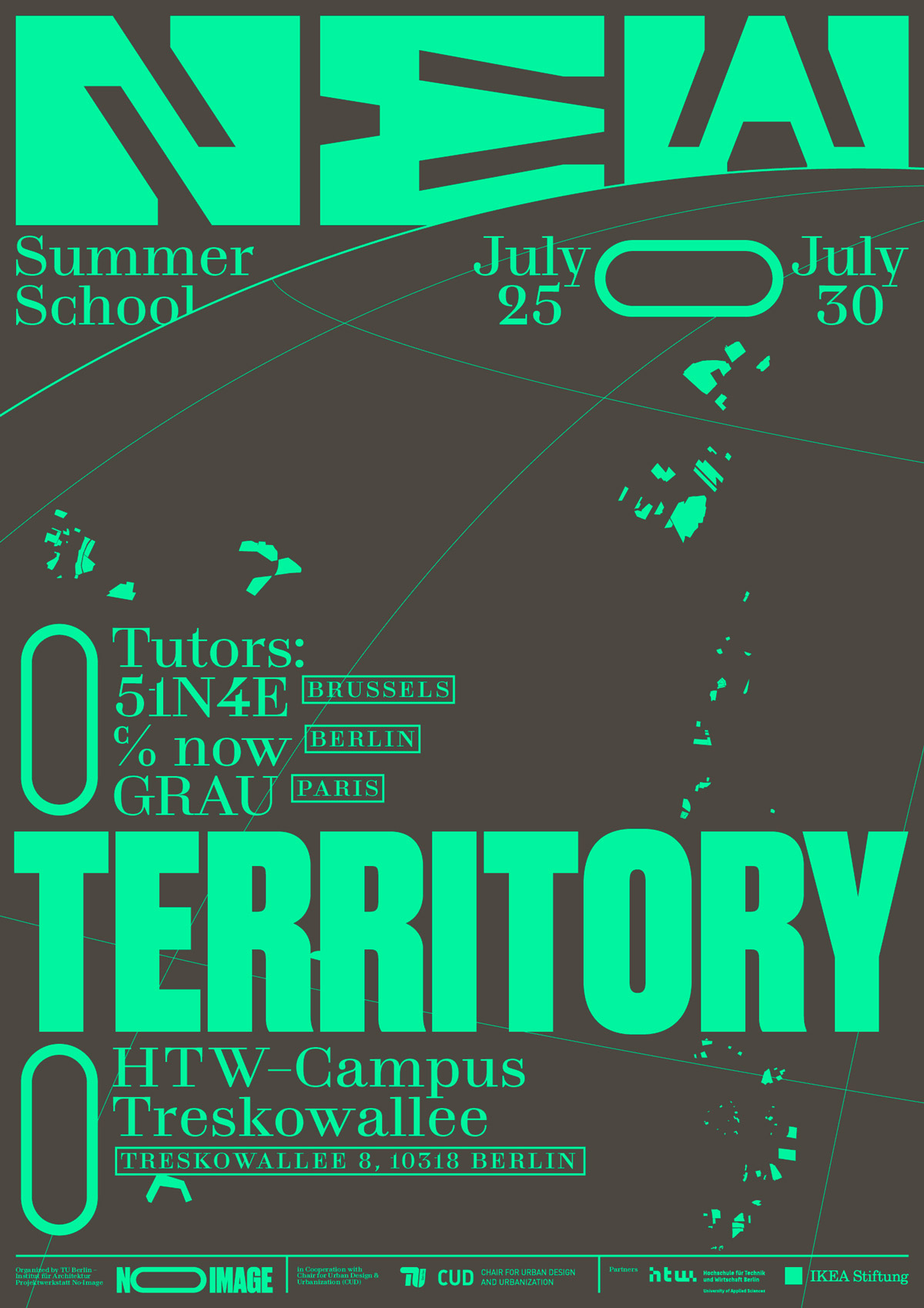INVESTIGATIONS! Design Project
S10
By: Gruppe „c/o now”:
Nicolas Bobran, David Dietrich, Zahide Gülşah Durmaz, Gabrielė Dužinskytė, Thomas Haas, Fabian Herzog, Tobias Hönig, Sausan Haj Abdová, Andrijana Ivanda, Nikola Joksimović, Nils Kaltenpoth, Nicole Mroczek, Markus Rampl, Paul Reinhardt
No-Image Summerschool "New Territory" 2019
Published on August 19, 2020
[DEU] Die „S10“ wurde von c/o now mit den Teilnehmer_innen der von ihnen während der No-Image-Summerschool 2019 begleiteten Gruppe erarbeitet. Ausgangspunkt ist das Szenario eines über seine administrativen Grenzen nach Brandenburg hinauswachsenden Berlins. Statt die Gestaltung dieses Prozesses ausschließlich den Umlandkommunen zu überlassen – von denen vor allem die Ausweisung neuer, auf Einfamilienhäuser mit Doppelgaragen ausgerichteter Wohngebiete und damit das Lostreten einer explosionsartigen Sprawl-Welle zu erwarten ist – fordert das Projekt eine Intensivierung der gemeinsamen Landesplanung der beiden Bundesländer Berlin und Brandenburg.
[ENG] The "S10" was developed by c/o now with the participants of the group they accompanied during the No-Image Summer School 2019. The starting point is the scenario of Berlin growing beyond its administrative borders into Brandenburg. Instead of leaving the shaping of this process exclusively to the surrounding municipalities - which are expected to designate new residential areas oriented towards single-family homes with double garages and thus trigger an explosive sprawl wave - the project calls for an intensification of joint state planning by the two federal states of Berlin and Brandenburg.

[fig. 1] © Nikola Joksimovi

[fig. 2] © Sausan Haj Abdová
Mit Blick auf die Rolle infrastruktureller Maßnahmen bei der Sicherung urbaner Mindeststandards schlägt die Gruppe darüber hinaus projektorientierte Kollaborationen der Länder mit den Kommunen und semi-öffentlichen Körperschaften wie der Deutschen Bahn und landeseigenen Wohnungsbaugenossenschaften vor. Exemplarisch wurde dafür die neue S-Bahn-Linie S10 erfunden. Sie verbindet den Fern- und Regionalbahnhof des brandenburgischen Bernau im Nordosten Berlins – unter Einbezug Brandenburger Agglomerationskommunen und teilweise peripherer Stadtteile im Berliner Osten – mit dem neuen Flughafen Berlin Brandenburg im Südosten Berlins.
Considering the role of infrastructural measures in ensuring minimum urban standards, the group also proposes project-oriented collaborations between the Federal States, local authorities and semi-public bodies such as Deutsche Bahn and state-owned housing cooperatives. An example of this is the new S-Bahn line S10. It connects the long-distance and regional railway station of Bernau in Brandenburg in the north-east of Berlin - including Brandenburg agglomeration municipalities and partly peripheral districts in the east of Berlin - with the new Berlin Brandenburg Airport in the southeast of Berlin.

[fig. 3] S-10 stops © c/o now
Die 22 Stopps der Linie nutzen neben 19 bereits existierenden S-Bahnhöfen eine aufgewertete oberirdische U-Bahnstation und zwei neu ausgedachte Bahnhöfe, sowie ausschließlich von der Deutschen Bahn bereits verlegte Gleisstränge. Ausgehend von den Bahnhöfen als natürlichem Ort hoher sozialer Frequenzen, hat die Gruppe angelehnt an die hybriden Infrastruktur-Stadt-Visionen von Ralf Schüler und Ursulina Schüler-Witte (Bandstadt Grunewald) und die großmaßstäblichen Ansätze in der Lehre Oswald Mathias Ungers an der TU Berlin, Spekulationen über die S10 als kontinuierliches Bauwerk angestellt, das neben dem öffentlichen Personennahverkehr eine urbane Superstruktur bietet. Darüber hinaus versteht die Gruppe das S10-Bauwerk als Schwelle eines sich ständig rekonfigurierenden, verdichtenden, urbanen Raumes gegenüber metropolennahen Versorgungsflächen oder Flächen der Regeneration für Flora und Fauna auf dem sogenannten „Land.“
In addition to 19 existing S-Bahn stations, the 22 stops on the line use an upgraded above-ground underground station and two newly constructed stations, as well as tracks already laid by Deutsche Bahn. Starting from the stations as natural places of high social frequencies, the group, inspired by the hybrid infrastructure-city visions of Ralf Schüler and Ursulina Schüler-Witte (Bandstadt Grunewald) and the large-scale approaches in the teaching of Oswald Mathias Unger at the TU Berlin, has speculated about the S10 as a continuous structure that offers an urban superstructure in addition to public transport. In addition, the group understands the S10-building as a threshold of a constantly reconfiguring, densifying urban space vis-à-vis supply areas close to the metropolis or areas of regeneration for flora and fauna in the so-called "countryside".

NEW TERRITORIES - the last of a threefold workshop series initiated in the years 2017-2019 in the framework of the No-Image Summerschool (David Bauer, Brendan Finney and Sebastian Weindauer) Support by Johanna Westermann, Fabian Herzog und Saba Khanghahi.
c/o now is a Berlin architectural practice taking care of imagining and realizing objects, architecture and urbanity, as well as the editorial revision of related issues.
www.co-now.eu
BB2040
[EN] Berlin Brandenburg 2040 was initiated by the Habitat Unit in cooperation with Projekte International and provides an open stage and platform for multiple contributions of departments and students of the Technical University Berlin and beyond. The project is funded by the Robert Bosch Foundation.
[DE] Berlin Brandenburg 2040 wurde initiiert von der Habitat Unit in Kooperation mit Projekte International und bietet eine offene Plattform für Beiträge von Fachgebieten und Studierenden der Technischen Universität Berlin und darüberhinaus. Das Projekt wird von der Robert Bosch Stiftung gefördert.








